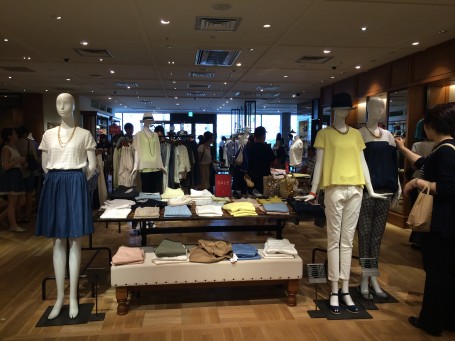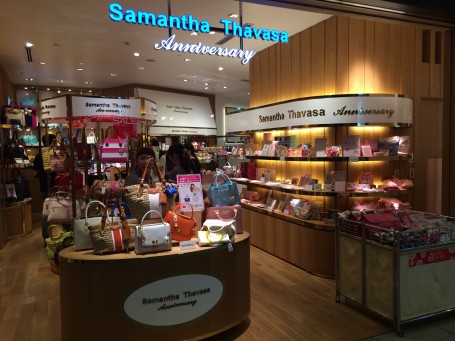By Kelli Kosaka
As I was walking around Meiji University, watching students pass me by, one thought struck me: Fashion is extremely important in the city. Nearly every girl and boy I saw on campus was dressed with purpose. I thought of how the average USC student dresses and was reminded that even though our campus is considered relatively fashionable, more than a few students in the crowd dress in sweatpants and T-shirts. That was definitely not the case here. Girls often not only had impeccable makeup, but also outfits that were perfectly matched and put together. Shapes were classic and feminine.
Immediately, I wanted to go out and shop around the Tokyo area. I do an average amount of shopping back home and figured it was okay to do a little more than average here. Then, in the department stores, I discovered something quite peculiar.
Women’s clothes and accessories were nice, yes, but they often lacked a certain level of uniqueness. No matter the store, almost every blouse was in a pastel shade, and almost every print was either polka dot, stripe, or gingham. Skirts were flouncy and ruffled. Jewelry was delicate and dangly. The feminine beauty ideal, I discovered, is strong in Japan.
Even purses tended to look similar. I stopped by the popular brand, Samantha Thavasa, on numerous occasions over the course of the trip and found that most of the bags, even from the brand’s other lines, tended to cater to the same market—twenty-something-year-olds. When targeting that age group, I found that girly and dainty styles trump all others.
I thought of a comment a Japanese friend once made to me regarding fashion in Japan. She had mentioned that nearly everything was good quality, but individual items—it didn’t matter what brand—tended to resemble each other.
I don’t view this as necessarily a bad aspect of Japanese culture, but a telling one. In our EASC-360 class, we covered Japanese cultural norms and standards. One of the topics we continuously touched on was the idea of the individual versus the group in Japan. Here, it’s usually the group that is valued more than the individual. Conformity is not something that is sought after in Japan, but it is still seen in many aspects of life, including fashion.
There are some exceptions—some stores I visited in Shibuya and Harajuku offered styles that were a lot less feminine—but it’s not a stretch to say that what the clothing market offers young adult women is limited.


